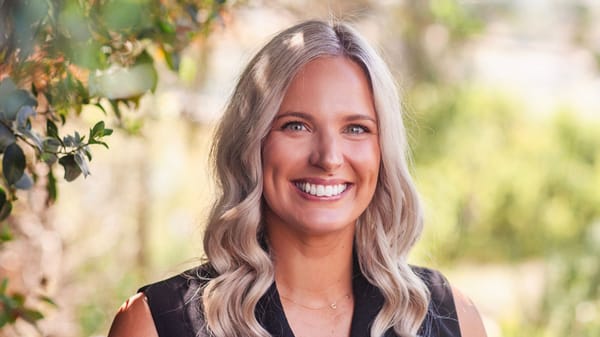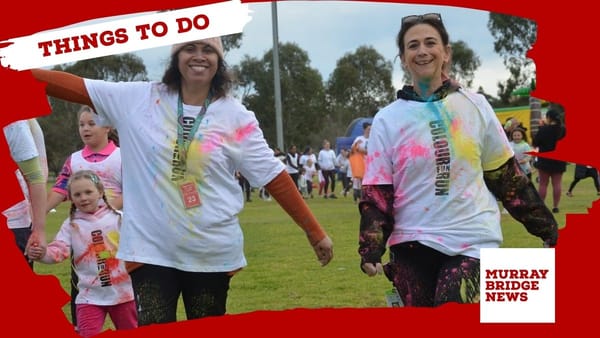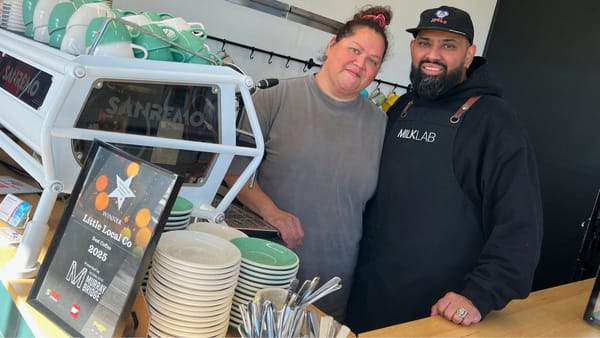Meet the migrants from Kiribati who call the Murraylands home
About 50 I-Kiribati workers have come to live in Murray Bridge and surrounds in the past few years. On Saturday, they celebrated their national holiday.

Locals support locals – that’s why this recent post is now free to read. Your support can help Murray Bridge News tell important local stories. Subscribe today.

On a grey and dreary Saturday, a little over 5000 kilometres from the land of their birth, a dozen I-Kiribati people gather for songs, dances and a barbecue.
The occasion is Kiribati Independence Day, and the setting an unlikely one: the garden out the back of the Murraylands Migrant Resource Centre in Murray Bridge.
The Pacific Island Labour Mobility scheme has brought about 50 migrants from the tiny Pacific island nation into the region over the past four years or so.
Most work at food processing facilities such as Big River Pork, on farms, or in the aged care industry.
For many of them, Teatu Teumaia and George McKinnon’s home has been something of a halfway house.
Together with the team at the migrant resource centre, the couple have helped dozens of new arrivals settle in, learn the language and get used to their employers’ expectations – and that chilly climate.
“In our culture we give everything for free,” Ms Teumaia said.
Welcoming newcomers to Australia had been easy, though, she said: “everyone is so lovely here, very kind”.
Mr McKinnon fell in love with Kiribati – and Ms Teumaia – during a posting there with the Royal Australian Navy.
The first thing to know was how to pronounce it, he said: “kiri-buss”.
In some respects it was a beautiful tropical paradise, he suggested, with world-renowned fishing and surfing, and 30-degree temperatures year-round.
But life could also be hard there.
Locals support locals. Your support helps Murray Bridge News tell important local stories.
Its 33 islands were not well suited to growing fresh produce, standards of medical care were poor, there was no television, there were no toilets, and most homes drew their water from brackish wells.
Then there was the looming threat of climate change, a serious one given that the highest point on the main island of Tarawa was just three metres above sea level.
High seas already crossed the width of the atoll, from the seaward side to the lagoon side, in places a couple of times per year.
Mr McKinnon offered a few points of trivia, too.
Kiribati had been the site of a major World War II battle, the Battle of Tarawa; could be the final resting place of missing 1930s aviator Amelia Earhart; and had been the first nation in the world to welcome the new millenium on January 1, 2000, thanks to its location on the international date line.

The former Gilbert Islands gained their independence from the United Kingdom on July 12, 1972.
To celebrate the anniversary, Murray Bridge’s Mayor, Wayne Thorley, helped Ms Teumaia cut a cake emblazoned with the red, white, blue and gold Kiribati flag on Saturday.
I-Kiribati people did not make up a big fraction of the city’s population, he said, “but they play a very important part”.
“I’m so happy you’re part of our community,” he said.

As guests lunched on barbecued chicken and sausages, five I-Kiribati men wearing traditional dance mats, sashes and garlands performed several dances.
As they finished, they shouted a chant in the Gilbertese language.
Ms Teumaia translated it, roughly: “Murray Bridge, Murray Bridge is our home, we are here, ayo – this is Murray Bridge”.
The men were preparing for a dance-off that night, where they would compete against I-Kiribati dancers from Naracoorte and Adelaide.
They might have been far from the land of their birth, but they wouldn’t be far from their home on the River Murray.






